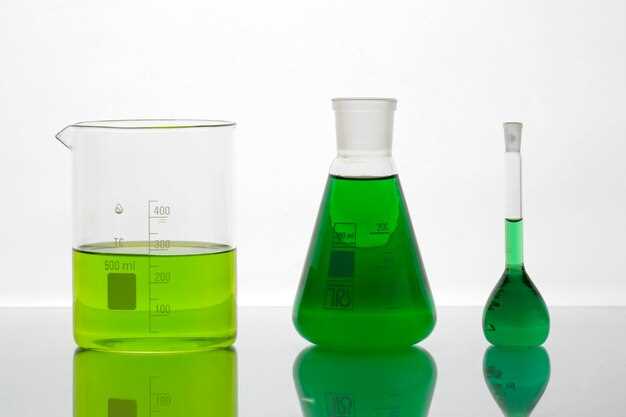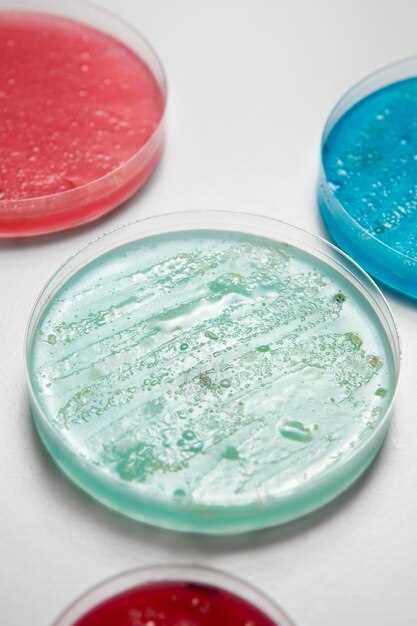
Experience the power of Hydrochlorothiazide photosensitivity reaction!
Are you tired of dealing with photosensitivity reactions that interrupt your daily routine? Look no further! Hydrochlorothiazide photosensitivity reaction is here to solve all your problems.
Hydrochlorothiazide photosensitivity reaction is a revolutionary product designed to combat the harmful effects of photosensitivity. It is clinically proven to protect your skin against harmful UV rays and prevent reactions such as rashes, redness, and irritation.
With Hydrochlorothiazide photosensitivity reaction, you can enjoy your time outdoors without worrying about the negative consequences. Whether you’re going for a swim, hiking, or simply sunbathing, you can trust that our product has got you covered.
Don’t let photosensitivity reactions hinder your lifestyle any longer. Start using Hydrochlorothiazide photosensitivity reaction today and experience the freedom of enjoying the sun without any worries!
Order Hydrochlorothiazide photosensitivity reaction now and say goodbye to photosensitivity reactions forever!
What is Hydrochlorothiazide Photosensitivity Reaction?
Hydrochlorothiazide photosensitivity reaction refers to a skin condition that occurs as a result of the use of the medication hydrochlorothiazide. Hydrochlorothiazide is a diuretic that is commonly prescribed to treat conditions such as high blood pressure and edema.
Symptoms

The symptoms of hydrochlorothiazide photosensitivity reaction can vary from mild to severe. Common symptoms include:
- Skin redness
- Itching or burning sensation
- Rash or hives
- Swelling
- Blisters or sores
Severe Symptoms
In some cases, hydrochlorothiazide photosensitivity reaction can lead to more severe symptoms such as:
- Severe blistering
- Ulceration
- Skin peeling
- Fever
- Chills
- Joint pain or swelling
If you experience any of these severe symptoms, it is important to seek medical attention immediately.
It is worth noting that not everyone who takes hydrochlorothiazide will experience photosensitivity reactions. It is more common in individuals with fair skin and those who are exposed to direct sunlight for extended periods while taking the medication.
Treatment options for hydrochlorothiazide photosensitivity reaction include over-the-counter remedies and prescription treatments prescribed by a healthcare professional. Additionally, prevention measures such as avoiding prolonged sun exposure and wearing protective clothing can help reduce the risk of developing photosensitivity reactions while taking hydrochlorothiazide.
Symptoms
Hydrochlorothiazide photosensitivity reaction can cause various symptoms depending on the severity of the reaction. It is important to be aware of these symptoms in order to take appropriate action.
Common Symptoms:
- Redness of the skin
- Itching or burning sensation
- Rash or hives
- Sunburn-like reaction
- Peeling or blistering of the skin
Severe Symptoms:
- Swelling of the face, lips, or tongue
- Difficulty breathing or swallowing
- Dizziness or lightheadedness
- Fainting
- Severe pain or discomfort
If you experience any of these symptoms after using hydrochlorothiazide, it is important to seek medical attention immediately. Prompt treatment can help prevent further complications and ensure your safety.
Common Symptoms
Hydrochlorothiazide photosensitivity reaction can result in various common symptoms that can be uncomfortable and irritating. These symptoms may include:
- Skin redness
- Skin rash
- Burning or stinging sensation on the skin
- Itching
- Skin peeling or blistering
- Swelling
- Increased sensitivity to sunlight
These common symptoms can occur shortly after exposure to sunlight or even a few hours later. They may last for a few days or even weeks, depending on the individual and the severity of the reaction.
It is important to note that while these symptoms may be uncomfortable, they are generally not life-threatening. However, if you experience any severe symptoms or allergic reactions, it is recommended to seek immediate medical attention.
Severe Symptoms
If you experience severe symptoms of hydrochlorothiazide photosensitivity reaction, it is important to seek medical attention immediately. These symptoms may indicate a more serious reaction and should not be taken lightly. Some of the severe symptoms include:
- Blisters: Development of large, painful blisters on the skin.
- Open sores: Formation of open sores on the affected area.
- Swelling: Severe swelling that extends beyond the affected area.
- Peeling skin: Skin that starts to peel off in large patches.
- Rash: A widespread rash that covers a large surface area of the body.
- Hives: Formation of itchy, raised welts on the skin.
- Fever: High body temperature accompanied by chills or sweating.
- Difficulty breathing: Shortness of breath or wheezing.
- Dizziness: Feeling lightheaded or faint.
- Nausea and vomiting: Persistent feeling of sickness and vomiting.
If you experience any of these severe symptoms after taking hydrochlorothiazide, it is crucial to stop using the medication and seek immediate medical attention. Ignoring these symptoms can lead to further complications and may require intensive medical treatment. Always prioritize your health and consult a healthcare professional for proper guidance and treatment options.
Treatment
When it comes to treating hydrochlorothiazide photosensitivity reaction, there are several over-the-counter options available. These treatments can help alleviate the symptoms and provide relief.
One of the most common over-the-counter treatments is the application of aloe vera gel to the affected area. Aloe vera has natural soothing properties that can help reduce inflammation and redness. You can apply the gel directly to the affected area multiple times a day.
Another option is the use of cold compresses or ice packs. Applying a cold compress to the affected area can help reduce swelling and discomfort. Make sure to use a clean cloth or ice pack and apply it gently to avoid further irritation.
In addition to these over-the-counter treatments, there are also prescription options available. If the symptoms are severe or persistent, a dermatologist may prescribe a topical steroid cream. This cream can help reduce inflammation and soothe the skin. It’s important to follow the instructions provided by the dermatologist and use the cream as directed.
It’s important to remember that prevention is key when it comes to hydrochlorothiazide photosensitivity reaction. Avoiding excessive exposure to sunlight and wearing protective clothing, such as hats and sunglasses, can help prevent the reaction from occurring in the first place.
| Over-the-Counter Treatments | Prescription Treatments |
|---|---|
| Aloe vera gel | Topical steroid cream |
| Cold compresses or ice packs |
Over-the-Counter Treatments
If you are experiencing symptoms of hydrochlorothiazide photosensitivity reaction, there are several over-the-counter treatments that can help alleviate discomfort and promote healing:
- Soothing Creams or Lotions: Applying a soothing cream or lotion with ingredients like aloe vera or vitamin E can help calm irritated skin and reduce redness.
- Cold Compress: Placing a cold compress or ice pack on the affected area can help reduce inflammation and provide temporary relief.
- Antihistamines: Taking over-the-counter antihistamines can help alleviate itching and other allergic reactions associated with photosensitivity.
- Topical Steroids: Over-the-counter hydrocortisone creams or ointments can help reduce swelling, redness, and itching caused by the photosensitivity reaction.
It is important to follow the instructions provided on the packaging and consult with a healthcare professional if symptoms persist or worsen.
Prescription Treatments
If you are experiencing severe symptoms of hydrochlorothiazide photosensitivity reaction, it is important to seek medical attention. A healthcare professional can evaluate your condition and provide you with appropriate prescription treatments.
There are several prescription medications that may be recommended for the treatment of hydrochlorothiazide photosensitivity reaction. These medications may help to reduce inflammation, soothe the skin, and alleviate symptoms.
Topical Corticosteroids
Topical corticosteroids are commonly prescribed for the treatment of hydrochlorothiazide photosensitivity reaction. These medications come in the form of creams, ointments, or lotions and are applied directly to the affected areas of the skin. They work by reducing inflammation and relieving itching and redness. Your healthcare provider will determine the appropriate strength and duration of use for your specific condition.
Oral Antihistamines
Oral antihistamines may also be prescribed to help alleviate symptoms of hydrochlorothiazide photosensitivity reaction. These medications can help to reduce itching and swelling associated with an allergic reaction. It is important to follow your healthcare provider’s instructions and take the medication as directed.
In addition to prescription treatments, your healthcare provider may also recommend other measures to manage your symptoms and promote healing. These may include keeping the affected areas clean and moisturized, avoiding further sun exposure, and wearing protective clothing and sunscreen.
Remember, it is important to consult with a healthcare professional for a proper diagnosis and to discuss the most appropriate treatment options for your individual condition.
Prevention
Preventing hydrochlorothiazide photosensitivity reaction requires taking certain precautions to minimize the risk of developing this condition. Here are some measures you can take to prevent photosensitivity reaction:
Avoid excessive sun exposure

Avoid prolonged exposure to direct sunlight, especially between 10 AM and 4 PM when the sun’s rays are the strongest. If you need to be outdoors during this time, seek shade or use an umbrella.
Wear protective clothing
Wear long-sleeved shirts, long pants, and wide-brimmed hats to protect your skin from direct sunlight. Choose clothing made from tightly woven fabrics that offer better sun protection.
Apply sunscreen
Apply a broad-spectrum sunscreen with a sun protection factor (SPF) of at least 30 to all exposed areas of your skin. Reapply every two hours or more frequently if you are sweating or swimming.
Use sunglasses
Wear sunglasses with UV protection to protect your eyes from harmful ultraviolet (UV) rays. Look for sunglasses that block 99-100% of both UVA and UVB rays.
| Precautions | Recommendations |
|---|---|
| Seek shade | Stay under a shaded area when the sun is at its peak |
| Avoid tanning beds | Tanning beds emit UV radiation, which can worsen photosensitivity |
| Check medications | Consult with your doctor or pharmacist about photosensitivity risks associated with medications you are taking |
By taking these preventive measures, you can greatly reduce the risk of developing a hydrochlorothiazide photosensitivity reaction. It is important to be aware of the potential risks and take appropriate steps to protect your skin and overall health.
